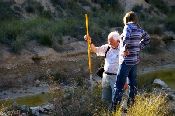|
Runoff barriers: experimental results and conclusions |
 |
|
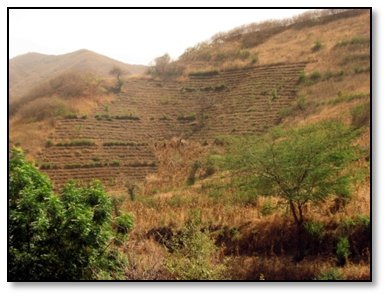 |
Cape Verde has been facing to severe environmental problems impact for the people living in the island. In order to control desertification (drought, storm runoff, erosion) the government has been taking actions regarding biodiversity conservation, ecosystem management and better management of water resources.
|
Slanting terraces as a form of conservation are widespread, but in the dry climate vegetation cover is low and the terraces do not always have the desired effect. The experiment aims at improving the system with vegetation barriers.
| Experiment: lining terraces with pigeon peas to improve runoff barriers |
 |
The experiment was carried out in a sub-watershed which is located in the Ribeira Seca, Santiago island to see if vegetative barrier can be used in order to increase surface cover and reduce runoff. Pigeon pea was planted as vegetative barrier in about 330 ha land (see photo left). The advantage is that pigeon peas maintain a high cover as dense bushes and can also be used as animal fodder. The experiment included pruning of the bushes, which provides additional fodder. |
To evaluate the effects of the technology the hydrologic behavior was monitored in the outlet of two sub watersheds (Longueira and Serrado). At the outlet of the Longueira subwatershed runoff flow and suspended sediment load (with sampling bottles) was measured for the period 2005-2009. For the period 2009-2011 only runoff flow was measured.
| In the fields, vegetation cover, organic matter and rock outcrops were estimated using 25 m transects. In addition, leaf area index and soil hydraulic conductivity were measured. Assessment of soil erosion and erosion risk for pigeon pea cultivation with and without pruning was estimated using the PESERA model. The pigeon pea were not sown in contour lines to form barriers as planned, but were planted in pits together with maize and beans to cover more soil. |
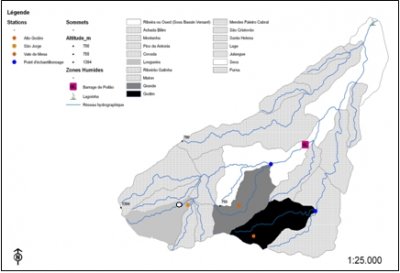 |
The maximum runoff from the subcatchment did not change much (5-6 m³/s) while the annual precipitation varies. This is related to the variability and type of rainstorms recorded.
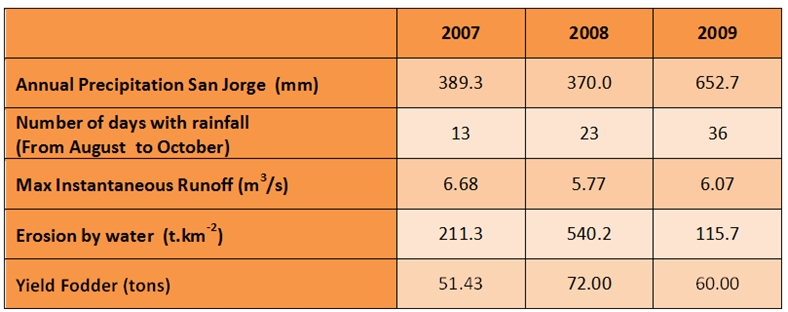
 |
The result obtained from running erosion model (PESERA, see table below) shows that 58 km² of land with erosion rates greater than 10 t.ha-¹.yr-¹ was reduced to 42 km² in pigeon pea cultivation without pruning, indicating a reduction of 27.6% . With respect to biomass production the pigeon pea cultivation plays an important role not only in the fight against desertification and erosion, but also in improving the income of animal raisers. The result also shows the increase of biomass production (varies between 1410 and 1450 kg/ha) in more than 90% of the study are |
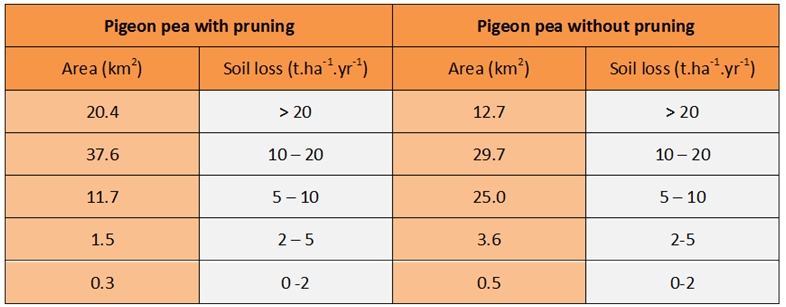
Data on runoff, erosion rate and suspended sediments are available for only 2010 and partially for 2011 (see table below). Using only one year data is not sufficient to make any firm conclusions to assess the effect of pigeon pea plantation on controlling runoff and soil losses.

 |
The results are evaluated from a production, socio-cultural and economic point of view. The bars express the estimated or measured percentage of change with respect to the reference situation. This change can be positive (blue) or negative (red). Note that this evaluation is based on the experiments, on the long term experience of the coordinating team in this area and on consultations with the farmers. |
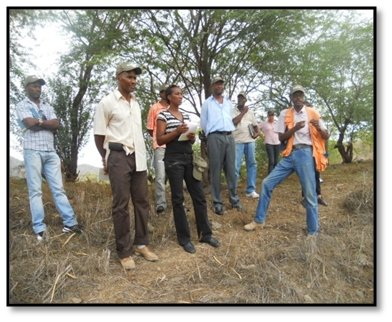 |
Stakeholders were involved since the beginning of the project. They were involved in selecting and implementing the technology. The stakeholders seem to be convinced that the cultivation of pigeon pea and afforestation with fruit trees help in combating land degradation. This was shown by the workshop organised with them.
Stakeholders evaluate the technology as very positive in terms of production and other effects that relate to a higher income. They only negative aspect is that conserving water upstream might cause water shortage downstream.
|
|
This technology helps improve vegetation cover which helps in reducing surface runoff and soil erosion. Whether applied as terrace barrier or more mixed with the traditional Maize crop in an intercropping pattern crop yield is increased and supplemented with fodder supply from pruning of the pigeon peas.
|
|
When applied in the entire catchment it should be noted that downstream water supply might be affected. This may have consequences for a dam was built downstream with a reservoir for irrigation which may have less inflow of water.
|
|

